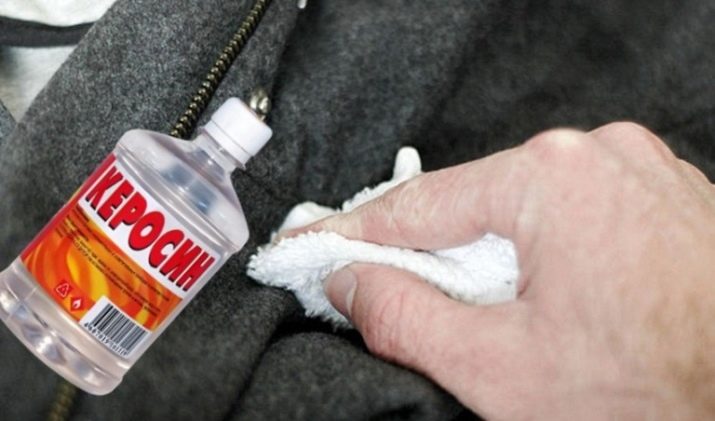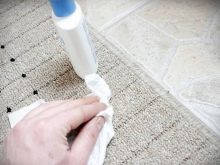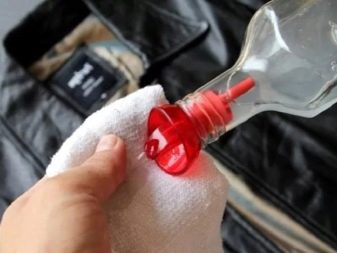How to remove wax from a candle?

Despite the wide variety of cleaning powders and cleaning products on the market, some stains can only be treated with natural products. This article focuses on candle wax, which is very difficult to remove and clean by hand.

General recommendations
Experienced housewives advise not even to try to wash wax from clothes either with bare hands or in a washing machine on a delicate mode. Unfortunately, the remnants of a wax candle do not dissolve with ordinary water, and the cleaning solutions do not cause them much harm. With paraffin, by the way, the situation is even more complicated - with the wrong effect, the substance is not only not washed, but, on the contrary, even more strongly eats into the fibers of clothing. Besides you must always wait for the paraffin to solidify completely, otherwise the problem area will only expand.

If you do not keep within 48 hours after the appearance of the stain, then it will be almost impossible to remove it. In this case, it makes sense to use citric acid, crystals of which are abundantly sprinkled with pollution.
After sprinkling the stained area with warm water from a spray bottle, all that remains is to wait a third of an hour and collect the rest with a household sponge. Then you can already use one of the techniques below. Old wax is sometimes removed from silk and wool with conventional dishwashing detergents. The liquid is poured onto the stain and tightened for one day with cling film. The treated fabric is washed with laundry soap.


After cleaning the main wax spot, a greasy mark often remains on the surface.
It will be possible to remove it with the help of ammonia with kerosene, acetone, turpentine or some kind of household chemicals.You need to apply the product for a day, and then wash it in the classical way.

Using various means
Sometimes you can remove a wax stain from clothes by simply keeping it at a low temperature, and then brushing the fabric with a toothbrush. However, in some cases, it is basically impossible to remove the remnants of the candle mechanically, so you need to first dissolve the wax. Will come to the rescue ammonia. A teaspoon of the product is dissolved in a liter of water, after which a cotton swab is soaked in the resulting solution. The wax spot is wiped with a solution, after which the fabric must be rinsed. This method can save even the most delicate and delicate fabrics.
Turpentine also shows itself well... Having mixed it with ordinary water in a 1: 1 ratio, you will need to treat it with a wax blot. However, after that it will not be enough just to rinse the clothes, they will need a full wash. Additional rinsing with a mixture of water and vinegar will help to relieve unpleasant odors or streaks on the surface.


Some household chemicals also help to cope with wax. Whiteness can be used on dense, non-deformable fabrics. Its components melt the wax and separate it from the fabric fibers. White applied directly to the blot, and then wiped off with a regular cotton swab. The procedure ends with a wash.
Some cleaning products are also able to deal with the wax. Powder granules are simply poured onto a damp spot, then rubbed into the surface and left for 20-30 minutes. Having brushed off the powder with a regular brush, the procedure will be completed by washing. When treating jeans, it makes sense to use an ammonia solution that is applied to the stain for a few minutes. Finally, an anti-fat remedy can also come to the rescue. Fresh wax can be cleaned and heated vegetable oil, which is left for 5 minutes, and then washed off with dishwashing liquid.


Basic methods
Getting rid of candle wax or paraffin begins with the fact that small scissors or some kind of kitchen tool remove those fragments of the solidified substance that can be removed. All movements must be very careful not to damage the fabric itself.

In order to remove a paraffin stain, the most commonly used hot method, the essence of which is to heat the problem area. If you bring the substance to the melting point, then it will move away from the fabric fibers. The easiest way to carry out this procedure is using an iron heated to 80 degrees.
When starting work, it is better to turn off the steam supply.

Further, while the electrical appliance is warming up, you need to prepare a regular napkin, cotton cloth and a white sheet of a suitable size. A napkin is placed under and on top of clothes, and the contamination itself is covered with a cloth and a sheet of paper. By ironing, the paraffin is melted, which is easily separated from the fibers. After completing the procedure, you cannot do without washing the processed clothes. If necessary, you can additionally use a stain remover to remove greasy stains.
Despite the effectiveness of this method, it is not suitable for every situation. Firstly, it is forbidden to iron synthetic fabrics at a temperature of 80 degrees, and secondly, this method is not used when rubbing wax from colored candles. When heated, the dye in the composition is only more strongly absorbed into the fabric surface, after which the thing will be irretrievably damaged.

A regular hair dryer will also help to wipe the wax from clothes, an alternative to which can be garment steamer. In addition, you will need a piece of natural fabric, such as an old towel or T-shirt. The stain is covered with a cloth and heated with steam. As a result of exposure to hot air, paraffin or wax will begin to melt and absorb into unnecessary fabric.If the end result is not satisfactory, then the action can be repeated as many times as you like.
I must say that the steamer in this case turns out to be much more effective than a hair dryer, but it must be located at a ten centimeter distance from the processed clothes.


Heating of a damaged item can be carried out even with boiling water.... The soiled thing is laid out in a basin and poured with a small amount of freshly boiled water so that the liquid passes through the blot. Next, the clothes are sent to the regular wash.
You can try cleaning the wax using a spoon heated over a fire. Paraffin or wax is covered with a napkin, and then a spoon is laid out on the damaged area. When the cutlery has cooled down, you can remove the napkins and send the clothes to the wash.



Another effective solution to the problem is considered freezing. However, it is only suitable for certain types of fabric, namely jeans, leather, wool, as well as products with a pile.
Freezing can be done not only in the freezer, but also with ice cubes.

Removal from different types of tissue
It is convenient to clean jeans or woolen trousers from the wax of a church candle or paraffin in the freezer. The same, by the way, applies to a leather jacket or pants, or a coat with a pronounced nap. The thing is simply put into the freezer, after which the hardened wax easily leaves the fibers. Small spots can be removed with ice cubes or ice water. It is easier to clean the wax with a toothbrush or clothing.
Delicate fabrics can only be cleaned with ice cubes. The pieces are applied to the wax blot, which is cleaned after a few minutes with a toothbrush. After completing the procedure, you need to lather the stain, wait 30 minutes and wash the clothes.


The most "problematic" fabrics are considered silk, satin, chiffon and organza.... Since they deform under the influence of high temperatures, the hot method of cleaning them from wax is usually not possible. Experts recommend soak such a thing in a basin, and then try to wipe the stain with a cloth made of natural fabric. At the end of cleaning, you will additionally have to use a stain remover. Synthetic clothing, for example, chiffon, is best treated with a cleaner applied to a sponge. but first test the chemical on an inconspicuous part of the soiled clothing.
Wool and silk and dresses made of them can be cleaned with ordinary dishwashing detergent. It will be enough to apply the substance for 12 hours, and then wash the garment thoroughly. It is convenient to remove the remains of hardened wax with a nail file or a small spatula. Colored wax, as a rule, creates a big problem for any fabric, since the dye contained in the composition penetrates deeply into the fibers, and high temperatures only "fix" the result. So the only thing you can do is put your clothes in the freezer and then try to mechanically remove the stain.


To wash suede clothes or the surface of furniture, it will be enough to cover the blot with a sheet of white paper, and after 3 seconds, apply a heated iron. If this action turns out to be ineffective, then it is necessary to combine 30 grams of an aqueous solution of ammonium hydroxide, 10 grams of wine vinegar and 40 milliliters of gasoline. A cotton pad is dipped in the resulting mixture and applied to the wax spot for a few seconds. Finally, wipe everything down with a clean rag or suede brush. It is better to put the fur in the freezer, or cover it with an ice bag. The wax droplets are then mechanically cleaned off.
It is not forbidden to treat the suede pile with steam, and then clean it with a brush or dry sponge. The main thing is not to rub the blots in order to avoid increasing contamination. You can also apply a mixture of water and ammonia or even rubbing alcohol to the stain.The leather practically does not interact with wax, and therefore it will be enough to hold the thing in the refrigerator, then bend it at the spot and remove the wax pieces by hand.
The shiny trace at the end is removed with a regular napkin moistened with acetone or ammonia.


In general, the choice of one or another cleaner depends on the type of fabric. Cotton, wool and other dense fabric will be enough to subject it to heat treatment, including soaking in water heated to 70 degrees. On the other hand, delicate fabrics should be frozen.
You will learn more about how to remove wax from a candle from clothes.








